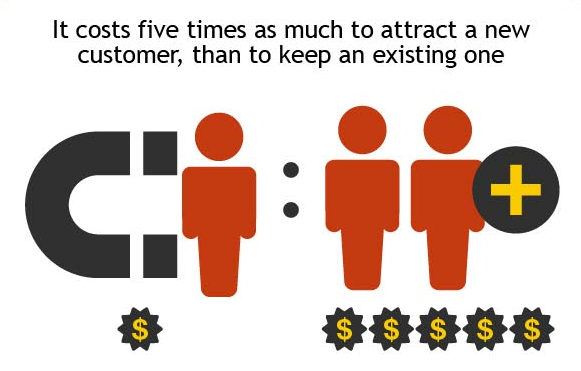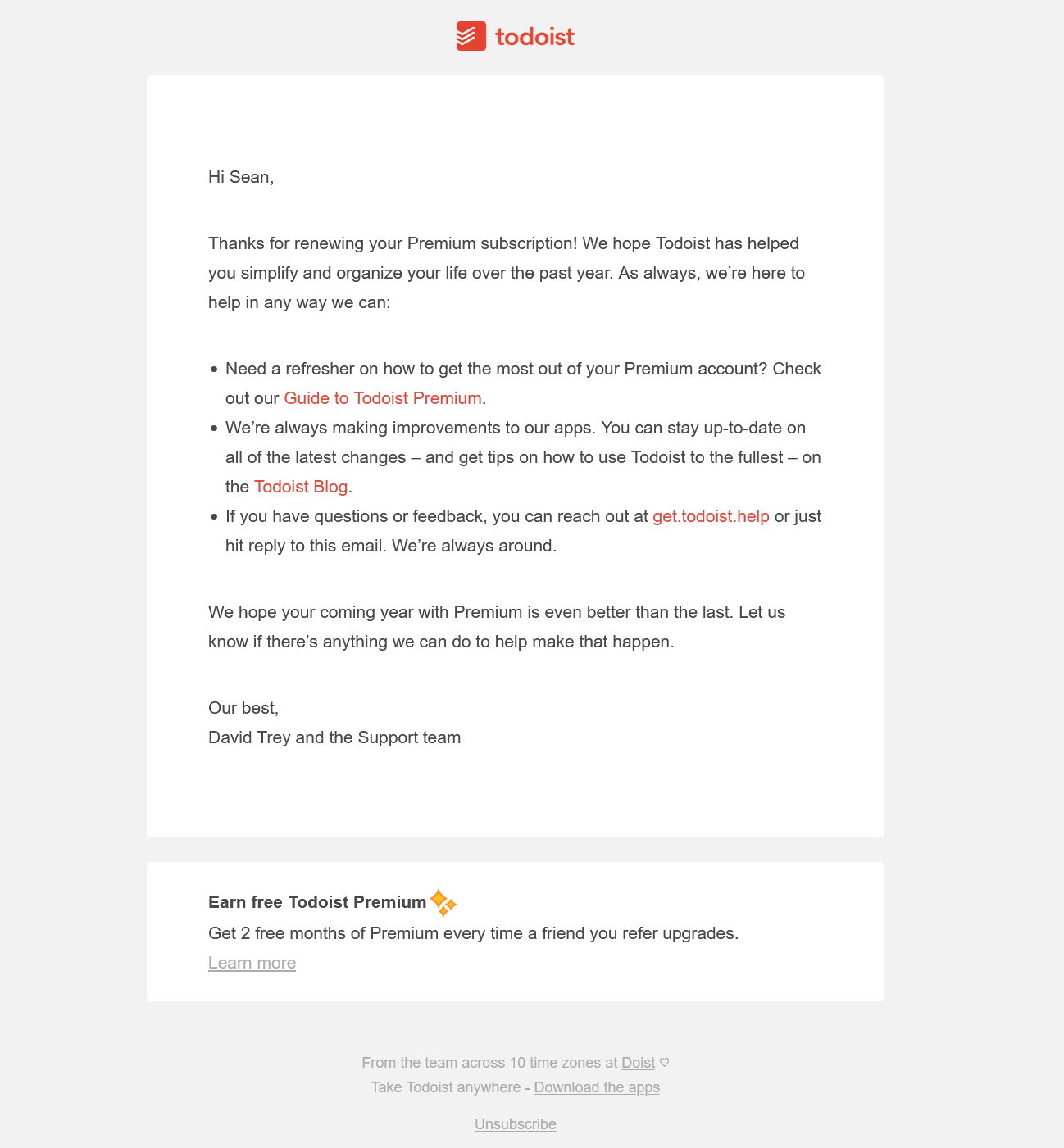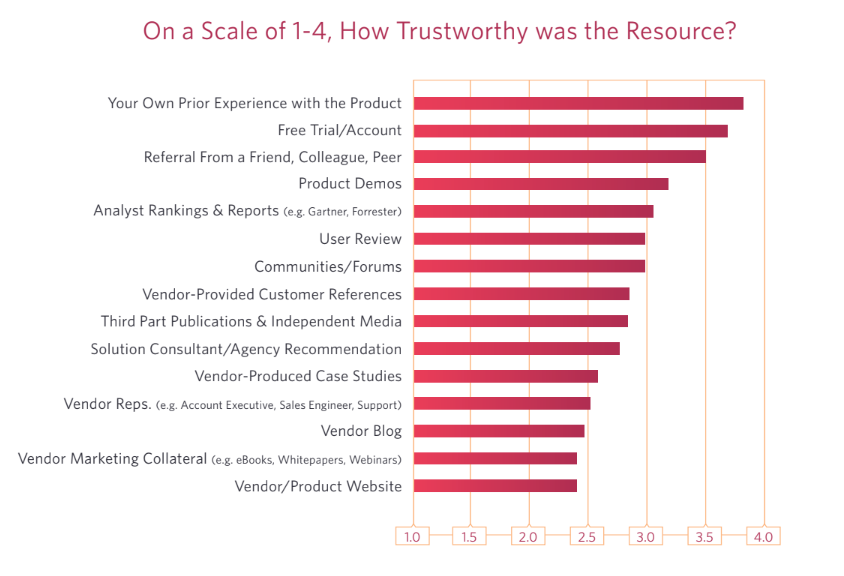If you think your job is over once a customer makes a purchase, then think again. The key to turning everyday users into advocates for your brand is what happens after the deal is closed.
Let’s talk about after-sale customer conversations that can help foster trust and loyalty.
Why initiate after-sales conversations?
Customer retention is vital. Any customer who’s invested the time, energy, and resources to navigate your sales funnel to the point of purchase is a customer you need to keep — especially in the B2B world where average deal sizes are typically substantial.
According to Invesp, it is five times more expensive to acquire a new customer then it is to retain one. Once you’ve put in the work to close a deal, it’s not time to relax — it’s time to double down.

Source: Invesp
When’s the best time for an after-sale conversation?
Unless you have hundreds of transactions per day, most companies can manage to contact new customers right after every sale.
Buying and selling should be an ongoing dialogue. With so many communication technologies, from video chat services to large and small business phone systems there is no excuse not to be constantly in touch with your customers.
While automation is wonderful, and works wonders for streamlining most communications during the buyer’s journey, there’s simply no replacement for a direct human-to-human interaction, especially at such a crucial moment.
But however you choose to do it, the medium should stay out of your way and allow you to focus on what’s important: the message. (Check out our guide on creating sales decks that close deals!).
So, let’s get down to business and analyze the six after-sale conversations you should be having to build a base of loyal users.
Six After-Sale Customer Conversations:
1. The thank you conversation
The easiest and simplest way to engage a customer post-sale is with a thank you email. It is a way to show great respect and appreciation for those who have used your product to enhance their lives and grow their business.
Doing so opens up a dialog. It is a step towards conversational marketing. It is no longer a simple, anonymous transaction if the company you buy from says thank you. There’s give and take.

This example thank you email uses personalization to ensure the customer doesn’t feel like another brick in the wall. It shares helpful links for the new user to get started.
And, crucially, it’s signed by a person which makes it feel less robotic and more like interacting with a fellow human.
A handwritten thank you note is also an excellent opportunity to engage customers and business partners through offline communication. A handwritten note, or small thank you gift goes a long way to build a positive relationship, especially if you plan to do business with the customer for a long while.
You can brighten the whole department’s day with a simple box of chocolates, and vastly increase their opinion of you.
2. The onboarding conversation
The last thing you want is your customer to boot up the new software you’ve just sold them and think: “Ok. Now what?” People across an organization need to use the product and get value out of it. And this is where the onboarding conversation comes in.
Whereas buyer enablement comes before a sale, onboarding comes after the sale to help the user get started and to reinforce that they have made the correct choice.
If you provide the best content marketing software on the planet, be sure to follow up on your sale with pointers showing customers how to use it. Give them simple to follow guides for setting it up and getting the most out of it.
Here, multiple content styles can mesh together to form an amazing and informative experience. Use videos, articles, examples, and illustrations to enhance your content experience.
If your product is software-based, your client may not be tech-savvy or have an IT department in their office to rely on. Sometimes, what a customer needs is simply someone to speak to on the phone.
Offer to set up an appointment with a product expert to work through any kinks. If it is a service you provide, this is how you can begin to build towards a team of account managers, if you don’t have them already.
3. The delivery conversation
Every small seller on Amazon, Etsy, or eBay has perfected this process. Usually, these small sellers have time to organize each delivery with a personal touch and email.
In B2B, when selling to another company, you need to take this to the next level. It’s also a good idea to automate the process as much as possible to make it airtight.
If you ship physical products, you need to hype your customer up for the arrival of their delivery. Don’t bother with dry and dull notifications — praise your product and get them excited.
After all, it can be excruciating waiting for a delivery from a supplier when you’re on the verge of running out of stock. The last thing you want as a supplier is for your customers to associate that frustration with you.
During this time, you should be sending advanced shipping notifications and keeping communication channels open and free with customers.
Your should fill the silent void between the customer making a purchase and the delivery arriving. This is when doubt can creep into the buyer’s mind. You can help set their woes to rest with a well-timed shipping update and give them a chance to find out more information.
Try customizing their journey with chatbots to keep communication open. If a customer does have a problem, you must be on hand to correct it.
4. The review conversation
Testimonials and social proof are becoming ever more prevalent in the ways that people and companies do business.
A study from TrustRadius found that referrals and user reviews rank much higher in trustworthiness compared to what a company says of itself. Product website and vendor blogs are right at the bottom, whereas referrals were only beaten out by personal, hands-on experience.

Source: TrustRadius
People are becoming more averse to marketing lingo. Buyers may not trust your word because of the simple fact that you’re selling something.
You need to start gathering testimonials and reviews from users as much as possible, and the best way to do this is to start up a conversation with those to whom you’ve made a successful sale.
Do internal research and identify those who have used your product long enough to have formed an opinion. And from that group, choose those who’ve seen the most success. If they are a long-term customer, a phone call might be appropriate. If not, a notification or email survey can efficiently gather a lot of reviews in one go.
By taking their experience, their word, and showing it to new potential customers, you can foster trust and loyalty.
5. The up-sell and cross-sell conversations
You’ve sold your product or service. Excellent. Now you have a vital piece of information about your customer — you know the kind of product they are willing to pay for.
What else in your repertoire of products is something they may also need? Do they support online services in multiple countries? Even better, do you serve one department of a large company?
Open a dialogue with them and see if other departments in the company could benefit from your product. Land and expand.
Draw links between your various services and products and reconnect with your customers. It is often easier to get existing customers to adopt new products than it is to acquire brand new customers.
6. The loyalty program
Customers can be hard to keep satisfied. They’ll soon begin looking for the perks or benefits of continuing to give you their business.
If you can develop a loyalty program, you’ll jump the gun and give them benefits before they start getting restless. If a loyalty program doesn’t make sense, offer them bonuses and extras such as discounts before they start looking elsewhere.
Referral discounts can be incorporated into this. Many companies have been doing it for years, and for good reason.
If you provide the best product around, it’s likely that those using it know other companies who could benefit too, and will want to share the joy. With a little incentive, you can get your customer to promote you. They benefit, you benefit, their contact benefits. It’s a win-win-win situation.
Discover: How to create more sales opportunities

Get conversing
Making a sale doesn’t finish your customers’ journeys. It transforms them into the hottest leads you can have.
Remember that you are building a relationship that goes both ways. Give them the whole package — greet them on their birthdays and alert them on the anniversary of their first purchase. Use as many types of content marketing as possible to make them feel like your brand is a partner they can rely on.

